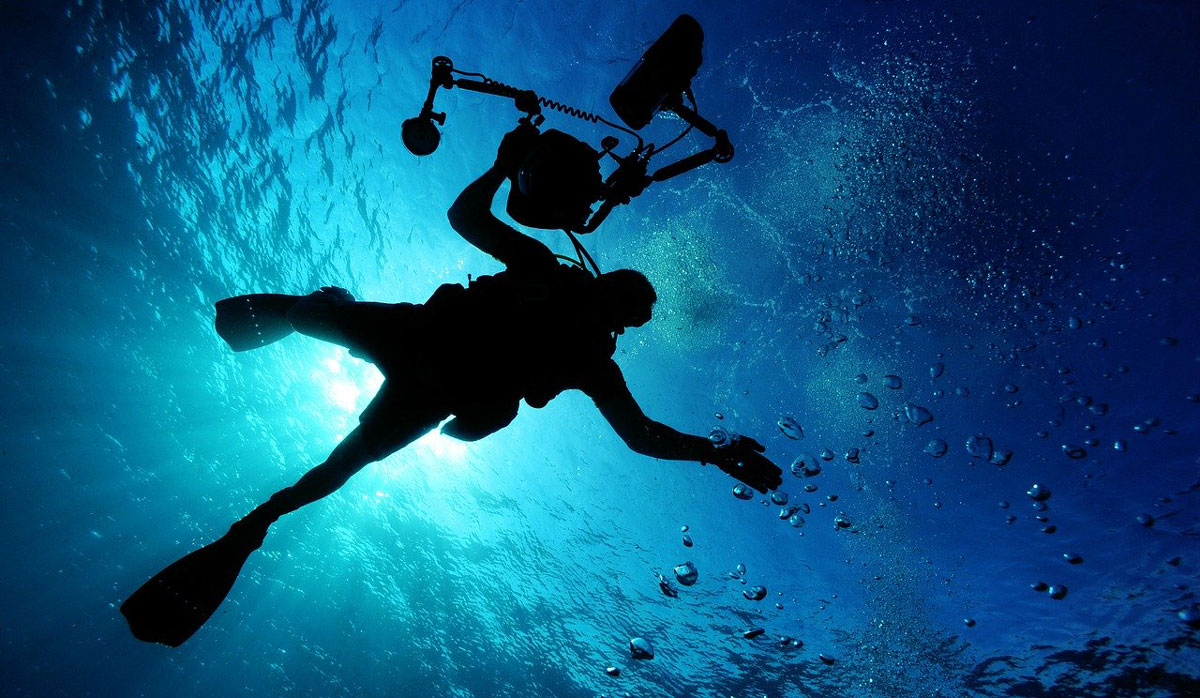Dizziness in the sea is undoubtedly a terribly unpleasant sensation, either before the time of diving, during the dive itself or later, the truth is that it is a relatively frequent pathology that, in general, does not have huge consequences but can be very annoying.
That is why it is convenient to know what we are facing. Dizziness in the sea is a type of motion sickness. On a technical level, we can say that it is the result of desynchronization between the different information that comes from the organs of balance (sight and hearing), to which anyone can be subject. And when it appears it can ruin the most beautiful and pleasant of the dives.
Causes of Dizziness
When we are in any means of transport, we lose control over our own movement and this causes our senses to become disoriented. Consequently, dizziness may appear. Our body is accustomed to verticality and balance; Muscles and joints indicate the spatial situation and posture of the body, while the inner ear identifies the direction and accelerations.
To understand what motion sickness consists of, we should understand how and through what organs we tell the brain that we are actually moving.
- The fluid in the semicircular ducts of the inner ear allows us to perceive the movement and how it is: up, down, from side to side, in circles or backward. It is the organ responsible for maintaining the dynamic and static balance of our body
- What we see also tells the brain if we are moving and in which direction.
- The skin also participates in this process, indicating which parts of the body are in contact with the ground or other stable surfaces or not.
- Muscles and joints also tell your brain what part of the body is in motion, the speed we carry or what posture we are adopting at each moment.
All these receptors are giving your brain information about your position or movement and “order” the rest of your body’s actions according to that information. If any of these receivers give information other than the rest (some say movement and another says the absence of movement) dizziness occurs.
A practical example for you:
Has it ever happened to you that you are in a car reading and you get dizzy? This happens because your whole body tells the brain that you are moving except your eyes, that when they read the book they tell the brain that you are standing. In a boat, it is the same. If while you are in the boat, you look at the inner ear and the muscles will detect moving forward, up and down by the waves, but the eyes are saying that there is no movement. The brain gets confused and this causes motion sickness affecting, among other things, your stomach.
Why does it affect the stomach so much? Apparently, when we feel this confusion, our brain believes that it is produced by eating some toxic food and tries to expel it by vomiting.
The affectation is progressive and all this can cause the unpleasant sensation of dizziness, accompanied by intense nausea, sweating, paleness, vomiting, etc. that most often indispose the person.
Prevention of dizziness and diving is key
Once it is established, the feeling cannot be stopped, and although it is not serious, the affected person has a very hard time. Tolerance is very variable from one person to another and there is a certain degree of adaptation. Also, there are certain individual causes that do not depend on external factors, such as fatigue, marine inexperience, alcohol consumption, etc.
Prevention is the best measure that can be taken, there is a variety of medication for this purpose.
In the case of divers who arrive at the dive site with a slight sensation of dizziness, the most common thing is that it improves upon contact with water. But if the sea is moving, the sensation can be maintained and it is not convenient to continue with the dive.
Although the dizziness may be tolerable, the appearance of vomiting during diving can cause an accident, either by the aspiration of the vomit itself or by a panic attack/uncontrolled ascent.
Other types of dizziness
- Vertigo by caloric stimulation: During immersion, the entry of cold water into the external auditory canal can stimulate the horizontal semicircular canal and cause severe dizziness. This usually does not happen because the water in contact with our body is heated and the stimulus is triggered, but extreme postures in caves or wrecks, or the presence of a thermocline can cause the sudden entry of water that generates fleeting but intense dizziness.
- Alternate baric vertigo: It is the consequence of asymmetric compensation between the two middle ears. Normally this happens during the ascent. The tubal function of an ear is altered and does not allow it to compensate properly. A simple explanation would be that while one ear “goes up” the other stays “down.” The usual complaint is the lack of compensation of one of the ears and is usually associated with diving in the context of an upper respiratory infection. It can also appear after successive dives in a short period of time. What causes inflammation of the eustachian tube by repetitive microbarotraumatisms. Its incidence is variable and is more frequent in women and can be related to the greater difficulty to compensate that they present. Vertigo is the main symptom and can be accompanied by sweating, nausea, and vomiting. If, while submerged, vertigo appears during the ascent along with problems of compensation of the middle ear with lowering again a little and making the appropriate compensation will solve the problem.
How to prevent or avoid motion sickness?
Now that we know why motion sickness occurs, the next step to avoid it is clear: make it clear at all times to our brain that we are effectively moving. How?
-
- Travel always looking forward. Sit always oriented in the direction of the march avoiding looking back for a long time. If you sit forward, your eyes and ears will capture the movement simultaneously.
- Lookout. If you are prone to dizziness, avoid looking at objects inside the vehicle (either a car or a boat) so that the view confirms that you are moving. If you travel by boat for a long period it can help you to climb to the upper deck, in the central part of the ship, and look at the horizon.
- Find the midpoint. Regardless of the means of transport in which you are traveling, look for a place that moves as little as possible. In an airplane, it is in the central part (in the aisle seats near the wings) or in our case in the central part of a ship. Avoid the sides or near the bow or stern, where the swing is greater and it is easier to get dizzy.
- Medication. In pharmacies, you can find many options, mainly Dramamine, which usually works very well. When causing drowsiness you must acquire the caffeinated version. It is advisable to also take it the night before diving to get used to it.
- Avoid having an empty stomach. For most people who get dizzy by boat, having an empty stomach is even more harmful. About 45-60 minutes before boarding, put some carbohydrates into the body and avoid greasy foods. Smoking does not help and of course no alcohol before diving.
- Look at the horizon. Let’s confirm to the brain that we are moving, speed and direction. Looking at the horizon the eyes say the same as the muscles and ears.
- Think about what you eat: Some people do well with the green apple to settle the stomach (in fact on some large cruises they give them when there is a lot of movement), others are helped by Coca-Cola, also ginger either in tea or cookies it seems to work very well … Fatty or spicy foods, as well as dairy products, are often contraindicated.
- Vomit: Do not hesitate, if you feel like it, do it, you will feel better. If the stomach tells you to throw it, you are nobody to contradict it. You will see how in a few minutes you feel better. Of course, always overboard and in favor of the wind :-)
Sergio Palazuelos Leon
PADI MSDT #345513
Azul Unlimited
We teach responsible scuba divers and ocean protectors. The brand is run by PADI IDC Staff Instructor Sarah Valdez who teaches scuba diving in person and on YouTube. Now she travels around the states and Mexico in her van scuba diving in new and different places. Follow her adventures on YouTube, Instagram, Facebook, and TikTok or join the Azul scuba community on Patreon.
Azul Unlimited is partnered with Azul Komodo, a top PADI IDC Center in Labuan Bajo, Indonesia offering daily dive trips to the Komodo National Park. Contact their team directly for an unforgettable experience diving in one of the top dive destinations in the world!
Scuba adventures on YouTube!
Subscribe for silly, educational scuba diving videos–totally free and designed to help all of our students wherever they are in the world. Ask your questions in the comments below each video to get direct answers from the Azul team.









